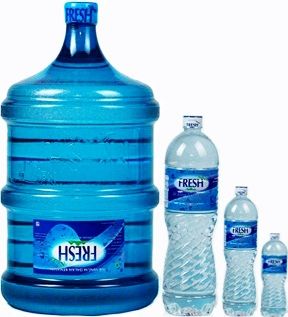Contamination of drinking-water by microbial pathogens can cause disease outbreaks and contribute to background rates of disease. There are many treatment options for eliminating pathogens from drinking-water. Finding the right solution for a particular supply involves choosing from a range of processes. This document is a critical review of some of the literature on removal and inactivation of pathogenic microbes in water.
The aim is to provide water quality specialists and design engineers with guidance on selecting appropriate treatment processes, to ensure the production of high quality agulation, flocculation and sedimentation; and filtration. Pretreatment can broadly be defined as any process to modify microbial water quality before, or at the entry to, the treatment plant. Pretreatment processes include application of roughing filters, microstrainers, off-stream storage and bank infiltration, each with a particular function and water quality benefit.
Applications of these pretreatment processes include removal of algal cells, high levels of turbidity, viruses and protozoan cysts. For conventional treatment processes, chemical coagulation is critical for effective removal of microbial pathogens. Together, coagulation, flocculation and sedimentation can result in 1–2 log removals of bacteria, viruses and protozoa. For waters with high levels of algae, care must be taken to remove these organisms without disrupting the cells, which may release liver or nerve toxins. High-rate clarification using solids contact clarification, ballasted-floc, or contact clarification systems can be as, or more, effective than conventional basins for removal of microbes. Dissolved air flotation can be particularly effective for removal of algal cells and Cryptosporidium oocysts. Lime softening can provide good microbial treatment through a combination of inactivation by high pH and removal by sedimentation.
Granular media filtration is widely used in drinking-water treatment. It removes microbes through a combination of physical–hydrodynamic properties and surface and solution chemistry. Under optimal conditions, the combination of coagulation, flocculation, sedimentation and granular media filtration can result in 4-log or better removal of protozoan pathogens. However, without proper chemical pretreatment, this type of rapid rate filtration works as a simple strainer and is not an effective barrier to microbial pathogens. Slow sand filtration works through a combination of biological and physical–chemical interactions. The biological layer of the filter, termed schmutzdecke, is important for effective removal of microbial pathogens. Precoat filtration was initially developed as a portable unit to remove Entamoeba histolytica, a protozoan parasite. In this process, water is forced under pressure or by vacuum through a uniformly thin layer of filtering material, typically diatomaceous earth.
As with granular media filtration, proper chemical conditioning of the water improves the treatment efficiency of precoat filtration. In contrast, membrane filtration removes microbial pathogens primarily by size exclusion (without the need for coagulation), and is effective in removing microbes larger than the membrane pore size. Oxidants may be added to water for a variety of purposes, such as control of taste and odour compounds, removal of iron and manganese, control of zebra mussel and removal of particles. For microbial pathogens, application of strong oxidizing compounds such as chlorine, chlorine dioxide or ozone will act as disinfectants, inactivating microbial cells through a variety of chemical pathways.
Principal factors that influence inactivation efficiency of these agents are the disinfectant concentration, contact time, temperature and pH. In applying disinfectants, it is important to take into account data on CT (disinfectant concentration multiplied by the contact time) for the specific disinfectant. Ultraviolet light (UV) inactivates microorganisms through reactions with microbial nucleic acids and is particularly effective for control of Cryptosporidium. For control of microbes within the distribution system, disinfectants must interact with bacteria growing in pipeline biofilms or contaminating the system. The mechanism of disinfection within the distribution system differs from that of primary treatment. Factors important in secondary disinfection include disinfectant stability and transport into biofilms, disinfectant type and residual, pipe material, corrosion and other engineering and operational parameters.
Performance models can help in understanding and predicting the effectiveness of granular media filtration processes for removal of particles and microbes. Similarly, equations can be useful in predicting microbial inactivation by disinfectants. It is also useful to consider variability in processes and in measurements to determine the overall effectiveness of treatment to control microbial risk. At present, performance models cannot precisely define microbial treatment effectiveness. This leads the operator back to the monitoring and control of critical points within the treatment process. The combined effect of these control measures ensures that the microbial water quality of the treated water meets or surpasses risk goals for the potable water supply.
A water safety plan combines elements of a “hazard analysis and critical control point” (HACCP) approach, quality managment and the “multiple barriers” principle, to provide a preventive management approach specifically developed for drinking-water supply. It can provide a framework for evaluating microbial control measures by helping to focus attention on process steps such as coagulation, filtration and disinfection, which are important for ensuring the microbial safety of water. Many current practices already employ some elements of a water safety plan, and this type of approach is likely to become more clearly defined in water treatment practices in the future.
The aim is to provide water quality specialists and design engineers with guidance on selecting appropriate treatment processes, to ensure the production of high quality agulation, flocculation and sedimentation; and filtration. Pretreatment can broadly be defined as any process to modify microbial water quality before, or at the entry to, the treatment plant. Pretreatment processes include application of roughing filters, microstrainers, off-stream storage and bank infiltration, each with a particular function and water quality benefit.
Applications of these pretreatment processes include removal of algal cells, high levels of turbidity, viruses and protozoan cysts. For conventional treatment processes, chemical coagulation is critical for effective removal of microbial pathogens. Together, coagulation, flocculation and sedimentation can result in 1–2 log removals of bacteria, viruses and protozoa. For waters with high levels of algae, care must be taken to remove these organisms without disrupting the cells, which may release liver or nerve toxins. High-rate clarification using solids contact clarification, ballasted-floc, or contact clarification systems can be as, or more, effective than conventional basins for removal of microbes. Dissolved air flotation can be particularly effective for removal of algal cells and Cryptosporidium oocysts. Lime softening can provide good microbial treatment through a combination of inactivation by high pH and removal by sedimentation.
Granular media filtration is widely used in drinking-water treatment. It removes microbes through a combination of physical–hydrodynamic properties and surface and solution chemistry. Under optimal conditions, the combination of coagulation, flocculation, sedimentation and granular media filtration can result in 4-log or better removal of protozoan pathogens. However, without proper chemical pretreatment, this type of rapid rate filtration works as a simple strainer and is not an effective barrier to microbial pathogens. Slow sand filtration works through a combination of biological and physical–chemical interactions. The biological layer of the filter, termed schmutzdecke, is important for effective removal of microbial pathogens. Precoat filtration was initially developed as a portable unit to remove Entamoeba histolytica, a protozoan parasite. In this process, water is forced under pressure or by vacuum through a uniformly thin layer of filtering material, typically diatomaceous earth.
As with granular media filtration, proper chemical conditioning of the water improves the treatment efficiency of precoat filtration. In contrast, membrane filtration removes microbial pathogens primarily by size exclusion (without the need for coagulation), and is effective in removing microbes larger than the membrane pore size. Oxidants may be added to water for a variety of purposes, such as control of taste and odour compounds, removal of iron and manganese, control of zebra mussel and removal of particles. For microbial pathogens, application of strong oxidizing compounds such as chlorine, chlorine dioxide or ozone will act as disinfectants, inactivating microbial cells through a variety of chemical pathways.
Principal factors that influence inactivation efficiency of these agents are the disinfectant concentration, contact time, temperature and pH. In applying disinfectants, it is important to take into account data on CT (disinfectant concentration multiplied by the contact time) for the specific disinfectant. Ultraviolet light (UV) inactivates microorganisms through reactions with microbial nucleic acids and is particularly effective for control of Cryptosporidium. For control of microbes within the distribution system, disinfectants must interact with bacteria growing in pipeline biofilms or contaminating the system. The mechanism of disinfection within the distribution system differs from that of primary treatment. Factors important in secondary disinfection include disinfectant stability and transport into biofilms, disinfectant type and residual, pipe material, corrosion and other engineering and operational parameters.
Performance models can help in understanding and predicting the effectiveness of granular media filtration processes for removal of particles and microbes. Similarly, equations can be useful in predicting microbial inactivation by disinfectants. It is also useful to consider variability in processes and in measurements to determine the overall effectiveness of treatment to control microbial risk. At present, performance models cannot precisely define microbial treatment effectiveness. This leads the operator back to the monitoring and control of critical points within the treatment process. The combined effect of these control measures ensures that the microbial water quality of the treated water meets or surpasses risk goals for the potable water supply.
A water safety plan combines elements of a “hazard analysis and critical control point” (HACCP) approach, quality managment and the “multiple barriers” principle, to provide a preventive management approach specifically developed for drinking-water supply. It can provide a framework for evaluating microbial control measures by helping to focus attention on process steps such as coagulation, filtration and disinfection, which are important for ensuring the microbial safety of water. Many current practices already employ some elements of a water safety plan, and this type of approach is likely to become more clearly defined in water treatment practices in the future.


.jpg)
.jpg)


.jpg)
.jpg)
.jpg)
.jpg)
.jpg)
.jpg)
.jpg)

